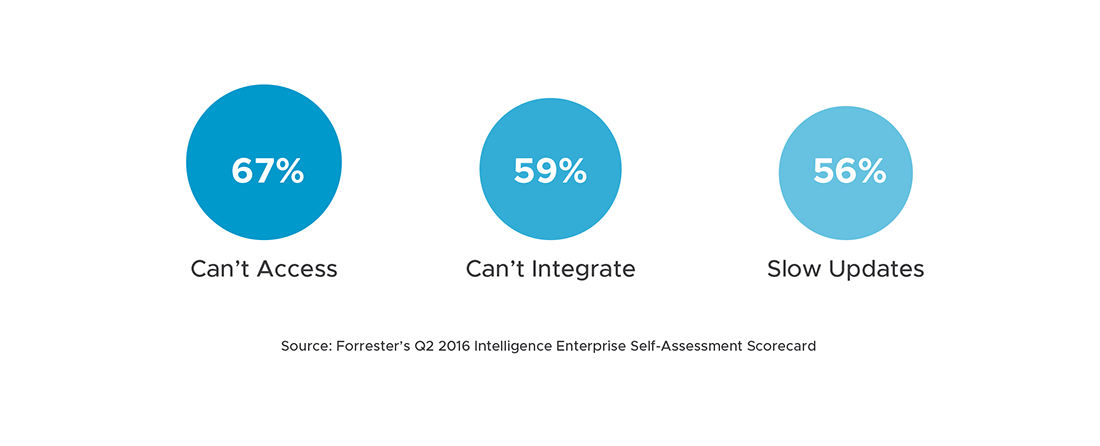Why do I Need a Data Catalog?
According to Forrester Research, only 14% of business stakeholders make thorough use of customer insights. That’s because most companies don’t have access to their data.

Often, that happens due to the existence of many sources of data that cannot be easily mined. Just consider a typical data stack for a company:
A company collects and stores an abundance of their data, but it is inaccessible and unavailable to be analyzed. The plan to make data-driven business decisions is hindered at the very beginning.
Did you know?
Only 0.5% of all data is currently analyzed. 1
Only 14% of business stakeholders make thorough use of customer insights. 2
Organizations that leverage customer behavioral insights outperform peers by 85% in sales growth and more than 25% in gross margin.
A data catalog solves this problem, as well as others. It makes data easy to find. It gives a comprehensive view of each piece of data across the databases and identifies relationships. Plus, it forms a foundation for an organization's data governance program.
Top 3 reasons for Data Inaccessibility
1. Complex Data Stack
Within a company, data originates from many sources which cannot be easily mined. Just consider a typical data stack for a company:

2. Dispersed Knowledge
3. Lack of Governance
Sources
1 Datanami
2 Forrester’s Q2 2016 Intelligence Enterprise Self-Assessment Scorecard
3 McKinsey and Company
|
What you should do now
|
